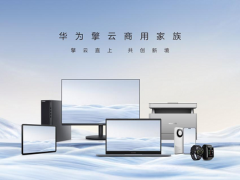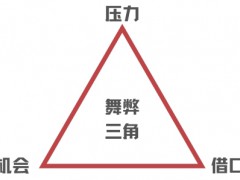據今日油價6月30日報道,全球液化天然氣市場已從2020年的疫情沖擊中恢復。隨著今年液化天然氣消費量和現貨價格的飆升,美國的液化天然氣出口量也在迅猛增長。當前,亞洲夏季現貨價格是至少6年來的最高水平,加上歐洲天然氣庫存非常低,從短期來看,美國2021年的液化天然氣出口將獲益,并有望創下紀錄。這些利好因素也促使歐洲重新補充天然氣庫存,要知道,今年4月,一股寒流導致歐洲天然氣庫存一度枯竭。
目前,市場基本面顯示,短期內美國液化天然氣出口強勁,因為美國的供應對買家具有吸引力。但從中長期來看,美國液化天然氣的吸引力到底有多大呢?
根據貝克研究所能源研究中心(CES)的研究,美國液化天然氣供應在未來將繼續在全球市場上扮演關鍵角色,這主要得益于三個方面因素:非石油關聯定價、買家(尤其是歐洲部分地區)能源安全的地緣政治動機,以及其他買家(尤其是亞洲買家)從燃煤發電轉向更清潔的天然氣的戰略規劃。
萊斯大學貝克研究所的Michelle Michot Foss和Anna Mikulska在《福布斯》雜志的一篇文章中指出:“為應對能源安全風險需要多樣化的供應,加上市場使用更清潔的天然氣的愿望,可能會很好地維持美國對其他價格敏感客戶的液化天然氣出口。”
美國的液化天然氣在中東歐國家很有吸引力,這些國家愿意減少對俄羅斯管道天然氣和俄羅斯天然氣工業股份公司(Gazprom)的依賴。包括波蘭和波羅的海等國家在內,它們一直渴望擺脫俄羅斯的能源影響,并繼續強烈反對俄氣主導的,繞過烏克蘭從俄羅斯通往德國的北溪2號(Nord Stream 2)管道項目。
兩年前,美國在批準增加液化天然氣和出口能力的新項目時,把液化天然氣出口稱為“美國向世界出口自由的分子”。
美國液化天然氣供應商還對定價和定期合同進行了革命性的調整,將價格與美國天然氣基準Henry Hub掛鉤,而不是與石油掛鉤,并允許在目的地和定期合同期限方面有更大的靈活性。美國液化天然氣也受益于日益激烈的液化天然氣現貨市場。
近幾個月的油價上漲提高了與原油價格掛鉤的全球液化天然氣價格,使與美國天然氣基準掛鉤的供應更具吸引力。盡管靈活的條款和與石油相關合同的定價替代方案是美國液化天然氣供應的重點,但事實上,就成本而言,美國出口產品難以與卡塔爾競爭,而且并非所有計劃在美國的項目都能在未來幾年進行最終投資決策(FID)。
卡塔爾決定開發世界上產能最大的項目,這對包括美國在內的其他主要液化天然氣出口國來說,是降低成本的一個重大挑戰。
今年年初,當卡塔爾宣布其大規模LNG擴建項目時,伍德麥肯茲研究主管賈爾斯?法勒(Giles Farrer)表示:“長期盈虧平衡價格為每百萬英熱略高于4美元,與俄羅斯北極地區的項目一樣,處于全球液化天然氣成本曲線的下限。卡塔爾正在追求市場份額。這個FID可能會給其他未采用FID的液化天然氣供應商帶來壓力,這些供應商可能會發現卡塔爾已經在新市場站穩了腳跟。”
盡管美國液化天然氣的成本和價格更高,但對一些買家來說,尤其是中歐的買家,與繼續依賴俄羅斯購買大部分天然氣相比,為美國供應的天然氣支付更高的價格是一個較小的代價。
值得一提的是,美國LNG供應存在“致命弱點”
撇開價格和地緣政治不談,第三個(日益重要的)因素將決定未來美國液化天然氣供應的吸引力。主要發達經濟體都在競相承諾凈零排放目標,而化石燃料項目的投資者和支持者則要求有可靠的減排目標和新增供應。伍德麥肯茲表示,這就是美國液化天然氣出口的“致命弱點”。
美國的供應可能在非石油掛鉤的定價或合同的靈活性方面具有吸引力,但其碳足跡可能會對客戶構成威懾,尤其是西歐,這些國家越來越關注其進口能源的碳排放狀況。
在美國,開發商已經開始押注于降低對環境的影響,與卡塔爾和澳大利亞爭奪全球液化天然氣出口的領導地位。伍德麥肯茲美洲液化天然氣首席分析師亞歷克斯?蒙頓(Alex Munton)表示:“為了贏得客戶,液化天然氣開發商必須采取更多行動,證明其項目的綠色資質。”
伍德麥肯茲指出,48個上游天然氣生產項目需要降低排放,才能在能源轉型中贏得買家。液化天然氣主管賈爾斯?法雷爾(Giles Farrer)表示:“在美國上游天然氣與全球盆地在碳強度方面展開競爭之前,需要多年的嚴格控制——無論是通過監管還是行業主導。”
在亞洲,液化天然氣相對于煤炭的優勢是美國出口的重點,但西歐由于排放問題而怠慢美國的供應,這可能會改變美國液化天然氣開發商規劃和設計出口產能的方式,使其不僅在成本方面,而且在“綠色”認證方面保持競爭力。
王佳晶 摘譯自 今日油價
原文如下:
Can The U.S. LNG Boom Compete On A Global Scale?
The global liquefied natural gas market has recovered from the 2020 pandemic shock to energy demand. As LNG consumption and spot prices surge this year, U.S. exports of LNG are booming. In the short term, American LNG exports are set for records this year, benefiting from the highest summer spot prices in Asia in at least six years and Europe’s very low natural gas inventories. Those have prompted Europe to restock with natural gas following a harsh winter that drained inventories when a cold snap in April caused unusual additional withdrawals from storage.
Currently, market fundamentals point to strong U.S. LNG exports in the short term as American supply is attractive for buyers. But how attractive is American LNG in the medium and long term?
According to the Baker Institute Center for Energy Studies (CES), U.S. LNG supply will continue to be a key player on the global market in the future, thanks to three main aspects: non-oil linked pricing, geopolitical motives of energy security for buyers, especially in parts of Europe, and the desire of other buyers, especially in Asia, to switch from coal-fired power generation to cleaner-burning natural gas.
“The need for diverse supplies to counter energy security risk and the desire to use cleaner-burning natural gas may well sustain U.S. LNG exports to otherwise price-sensitive customers,” Michelle Michot Foss and Anna Mikulska at the Rice University’s Baker Institute argue in a Forbes article.
“Molecules of U.S. Freedom”
U.S. LNG is attractive in central and eastern European countries willing to reduce their reliance on Russian pipeline gas and Russia’s gas monopoly Gazprom. These include Poland and the Baltic states, which have been eager to shake off Russian energy influence and continue to be strongly opposed to the Gazprom-led Nord Stream 2 pipeline project from Russia to Germany bypassing Ukraine.
The previous U.S. Administration even pitched LNG exports as “molecules of U.S. freedom to be exported to the world,” when it approved two years ago new projects to add additional American liquefaction and export capacity.
U.S. LNG suppliers have also revolutionized the pricing and term contracts by linking the price to the U.S. natural gas benchmark Henry Hub instead of to oil and allowing more flexibility in destinations and periods of term contracts. American LNG also benefited from the increasingly competitive spot market for LNG.
The oil price rally of recent months has raised global LNG prices linked to crude prices and made U.S. gas benchmark-linked supply more attractive.
While flexible terms and pricing alternatives to oil-linked contracts are points for U.S. LNG supply, the fact remains that in terms of costs, American exports struggle to compete with Qatar, and not all planned projects in the United States are sure to proceed to final investment decisions (FIDs) in the coming years.
Qatar’s decision to develop the world’s largest project in terms of capacity is a major challenge to the other key LNG exporters, including America, to reduce their costs.
“At a long-term breakeven price of just over $4 per million British thermal units, it’s right at the bottom of the global LNG cost curve, alongside Arctic Russian projects,” Wood Mackenzie research director Giles Farrer said when Qatar announced its massive LNG expansion project earlier this year.
“Qatar is pursuing market share. This FID is likely to put pressure on other pre-FID LNG suppliers, who may find Qatar has secured a foothold in new markets,” Farrer added.
Despite the higher costs and prices of U.S. LNG, for some buyers, especially in central Europe, paying more for American supply is a smaller price to pay than continuing to depend on Russia for most of their gas.
“The Achilles Heel” Of U.S. LNG Supply
Prices and geopolitics aside, a third – increasingly important – factor will be shaping the attractiveness of American LNG supply going forward. Major developed economies are in a race to pledge net-zero emission targets, while investors and backers of fossil fuel projects demand solid emission-reduction goals and profiles of new supply. This is where “the Achilles heel” of U.S. LNG exports lies, according to Wood Mackenzie.
American supply may be attractive in terms of non-oil-linked pricing or flexibility in contracts, but its carbon footprint could be a deterrent to customers, especially in Western Europe, which is increasingly looking at the emission profile of the energy it imports.
In the United States, developers have started to bet on showing a lower environmental impact as they compete with Qatar and Australia for global LNG export leadership.
“To win customers, LNG developers are having to do more to prove their projects’ green credentials,” says Alex Munton, Wood Mackenzie’s principal analyst for LNG in the Americas.
Lower 48 upstream gas production needs to lower emissions to win over buyers in the energy transition, WoodMac notes.
“It’ll take years of tighter control – regulation or industry-led – before US upstream gas competes on carbon intensity with global basins,” Giles Farrer, Director of LNG, said.
The benefits of LNG over coal in Asia is a point for U.S. exports, but Western Europe’s snub of American supply because of emissions concerns is likely to change the way U.S. LNG developers plan and design their export capacity to remain competitive not only in terms of costs but also in ‘green’ credentials.
免責聲明:本網轉載自其它媒體的文章,目的在于弘揚石化精神,傳遞更多石化信息,并不代表本網贊同其觀點和對其真實性負責,在此我們謹向原作者和原媒體致以敬意。如果您認為本站文章侵犯了您的版權,請與我們聯系,我們將第一時間刪除。







